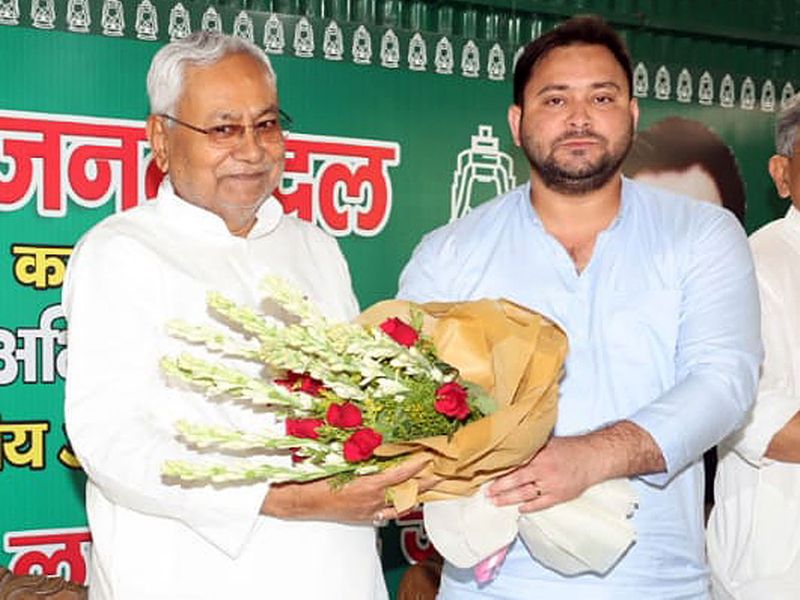_resources1_16a4a163927_medium.jpg)
In India, Nitish Kumar, current and future chief minister of Bihar has had many monikers — “conscience Kumar,” “Kursi Kumar” (one who loves power) and the most recent “Paltu chacha” (turncoat uncle) given by Tejaswi Yadav, chief of the RJD (Rashtriya Janata Dal).
This bitterness has not ensued that Kumar and Yadav don’t team up again. Kumar has now dumped the Bharatiya Janata Party (BJP) to partner with Yadav and the Congress to form the government again in Bihar. In 2017 after winning the assembly election in partnership with the RJD, Kumar had abandoned his coalition and partnered a government with the BJP after making corruption accusations against Yadav.
The only constant Kumar, 71, believes is in power and office. So what got Kumar to dump the BJP? Ironically the BJP’s success as the hegemonic political party of India is making its allies run. Also the hard politics of deploying investigative agencies like Enforcement Directorate (ED), Central Bureau of Investigation (CBI) and income tax (IT) department against opposition leaders is causing a huge disquiet. Recently Sonia Gandhi, interim president of the Congress, was interrogated for three days by the ED. Earlier Rahul Gandhi was interrogated for five days.
All this gave Kumar pause as he was fearful that the BJP would break his party — Janata Dal (United) — like the way it panned out in Maharashtra where the BJP toppled the Uddhav Thackeray government by using Shiv Sena defectors.
Kumar has always had a very cold relationship with Prime Minister Narendra Modi and Home Minister Amit Shah. Kumar, who nurses prime ministerial ambitions, was extremely upset at the rise of Modi. He has been a minister in the Vajpayee cabinet in the federal government.

A new grand alliance
Kumar and the other heavyweight regional party, RJD, have an electoral imperative to come together. Tejaswi and Lalu Yadav of the RJD have a near captive vote bank of 14.4 per cent of Yadavs. RJD has a hold on the 17 per cent Muslim voters in Bihar. Kumar brings the adi pichada (extremely backward castes) to the table. Kumar is a Kurmi, which is an electorally insignificant caste at four per cent in Bihar.
To remain in power, Kumar needs the RJD, which is now game. Sonia Gandhi reportedly intervened with Lalu Yadav (with whom she has an excellent political equation) to bat for Kumar who has been in touch with her. Yadav counselled son Tejaswi to forgive and forget and let Kumar return.
Yadav who has had a tough political schooling with his father — either in jail or hospitals — finally agreed to let Kumar in again.
A complicated relationship
The BJP had long suffered Kumar’s snubs. The Bihar chief minister refused to attend a NITI Aayog (apex public policy agency of the Government of India, tasked with catalysing economic development) meeting chaired by Modi last week. He also didn’t turn up for a dinner in honour of President Droupadi Murmu.
Earlier, when protests against the Agneepath recruitment scheme (Modi government’s plan to replace long-term employment with pensions for new military recruits with four-year contracts) broke out in Bihar, Kumar did not control the situation leaving BJP leaders to publicly complain of his inaction. Shah finally sent in central forces. Even on the caste census (enumeration of population), Kumar refused to toe the BJP’s line and decided to do a mini-census in Bihar.
This permanently complicated relationship status with the BJP was no longer feasible and had to end. And, it has ended. Kumar is all set to be the chief minister of Bihar for the eighth time with new partners. The business of power will go on for Kumar.











